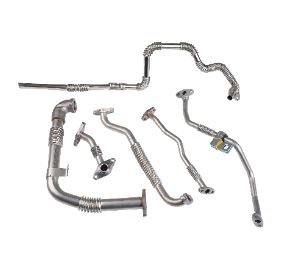The temperature resistance of low-pressure oil pipes is closely related to thermal stability in terms of material selection through the following factors:
The chemical composition of the material determines its ability to resist thermal degradation. For example, certain alloys are designed to have high thermal stability, maintaining their properties at high temperatures.
The material's melting point is a critical factor in its temperature resistance. Materials with higher melting points can withstand higher temperatures without melting.
Materials with a low thermal expansion coefficient are preferred for applications where temperature fluctuations are expected. These materials will not expand or contract significantly with temperature changes, reducing the risk of leaks or mechanical failure.
The material should resist oxidation at high temperatures, which can lead to corrosion and a reduction in the pipe's structural integrity.

Creep is the tendency of a material to deform permanently under stress when subjected to high temperatures for a prolonged period. Materials with high creep resistance are more suitable for high-temperature applications.
The material should be able to withstand repeated cycles of heating and cooling without developing cracks or other forms of damage.
The material must be chemically compatible with the oil it will carry, ensuring that it does not react with the fluid at high temperatures, which could lead to contamination or degradation of the pipe material.
The material should maintain its mechanical properties and corrosion resistance over the long term, even when exposed to high temperatures.
By carefully selecting materials with these characteristics, manufacturers can ensure that low-pressure oil pipes have the necessary temperature resistance and thermal stability for their intended applications.

 English
English Español
Español русский
русский












